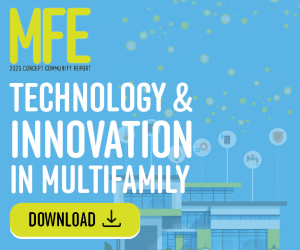
Keeping your renters engaged is critical not only for resident satisfaction, but also for long-term retention. Put simply: Residents who feel connected to their communities are just more apt to stick around.
It doesn’t stop there, though. According to property owners, engaged residents also care for their communities better—resulting in less wear and tear and a more attractive property overall.
“If a resident views a Tides property as a home, they are far more likely to have a higher pride of ownership over their units and the common areas,” says Ryan Andrade, co-founder and principal at Tides Equities, which owns multifamily properties throughout Arizona, California, Nevada, and Texas.
Does that mean you should throw a mixer or start grilling hot dogs by the pool each Friday? Maybe, but don’t dive in just yet. In today’s rental landscape—and particularly post-pandemic—residents’ needs are changing. Here’s what you can do to adapt.
1. Keep in Touch
Understanding your residents and their unique needs is vital to providing well-fitting community engagement opportunities. This might mean checking in with individual residents periodically, sending out buildingwide surveys and polls, or creating some sort of resident board with which your staff meets each month.
“Really listening to our residents to keep the events relevant and fresh has been important for us,” says Douglas Eisner, co-founder and managing director of The Calida Group, which owns multifamily developments across the country. “Even the idea generation process itself has engaged the residents. That way, we have buy-in to the experiences, and we achieve a more diverse attendance. At the end of the day, making sure the events never get stale is one of the keys to success.”
Tuning into your residents can also help you better understand where their heads are at post-pandemic. For some, steering clear of crowds and indoor parties may still be important. For others, a return to normalcy may be preferred. Knowing which camp your residents fall into can help you offer the right options for your community.
“Prior to the pandemic, all of our resident engagements were in person,” says Stéphanie Versin, senior vice president at Veritas Investments, a San Francisco–based real estate management firm. “As things started to open again, we recognized some residents still had concerns about attending large gatherings. We listened and shifted our programs to a hybrid model—digital and physical. This provides variety and improves the reach of engagement, as well as making us more visible to our residents.”
2. Help Residents Build Bonds
Property owners say resident connections play a big role in renewals, so putting a unique focus on socialization is important.
“Personal relationships and social interactions between neighbors are the keys to retention,” Versin says. “It helps to develop a sense of belonging.”
Properties can create these bond-building opportunities through in-person events, virtual gatherings, or even through digital tools, like resident messaging apps or portals. The latter can be particularly important with more residents working from home. “With many residents still working remotely, they are missing that sense of community they received at the office,” Versin says. “Our goal is not to just provide a roof but to create a home for a resident, and building a strong sense of community is a huge part of it.”
3. Go Beyond Social Events
While social events can make a big difference for residents, providing them with personal growth opportunities can also help them feel more connected and valued in their community.
At Kairos Investment Management Co., for example, properties offer a variety of life-improving programs, like after-school care, job fairs, tax prep services, school supply distribution events, and more. They also offer a service that reports on-time rent payments to credit bureaus, thereby improving residents’ credit scores.
“We place an emphasis on providing social programs addressing financial literacy, health education, employment assistance, and so much more,” says Jonathan Needell, chief investment officer at Kairos, a real estate investment and asset management company based in California. “Our property management teams and program director work closely with residents to identify which programs and events will be the most beneficial to each community.”
You can also give residents the opportunity to improve the greater community in which they live, something that further helps connect them to the area and increases their chances of renewal. These opportunities might include blood drives or participating in local Habitat for Humanity builds, among other options.
“We view each of the apartment communities that we manage as an extension of the surrounding neighborhood,” says Libby Ekre, principal of MEB Management Services, a multifamily management company based in Phoenix. “We’ve engaged in blanket drives for the homeless and support local fire, police, and community needs. Our retention for both employees and residents is positively impacted when we immerse ourselves in the community.”
4. Offer Variety
Finally, try to avoid being too repetitive with your events, and vary the engagement options you give your residents—both in size, scope, and style.
“We have different levels of events, each with varying levels of cost and production value,” Eisner says. “Some are casual and free. Some have ranged into the hundreds of thousands of dollars.”
You can even team up with other businesses to improve and vary your offerings. At shareDOWNTOWN, a Cherry Development property, the building works with local businesses and restaurants to produce a monthly party (with hand-delivered invites to boot).
“Our First Friday events offer a unique opportunity for residents to get to know each other and support neighboring businesses in the arts district who provide food, beverage, and entertainment,” says Grant Garcia, chief operating officer of Cherry Development.
Residents also enjoy discounts at these businesses, which only further builds their connections to the community.
“Residents welcome the savings, and the businesses welcome their patronage,” Garcia says. “Often, they become regulars and devoted customers of these businesses, strengthening the downtown community overall.”










